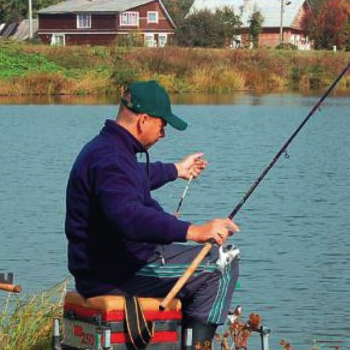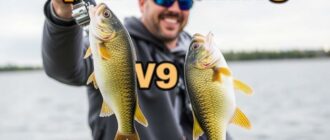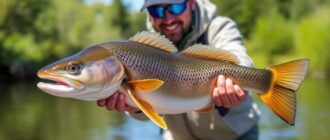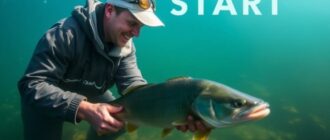- What Is Fly Fishing?
- Essential Fly Fishing Gear for Beginners
- Understanding Different Types of Flies
- Three Main Categories of Flies:
- Mastering the Basics: Fly Casting Techniques
- Key Fly Casting Tips for New Anglers:
- Reading the Water: Where to Find Fish
- Common Water Features to Watch For:
- Essential Fly Fishing Etiquette and Conservation
- Common Challenges New Fly Anglers Face and How to Overcome Them
- 1. Difficulty with Casting Accuracy
- 2. Not Detecting Bites Quickly
- 3. Choosing the Wrong Fly
- 4. Fishing Too Quickly
- Additional Resources for Learning Fly Fishing
- Fly Fishing Safety Tips
- Conclusion
Fly fishing is a beautiful blend of art, skill, and patience, offering an experience unlike any other type of fishing. If you’re new to this sport, the world of fly fishing might seem overwhelming with its specialized gear, techniques, and terminology. But don’t worry. With a little guidance, you’ll soon understand the basics and be ready to wade into streams or lakes with confidence. This article, Fly Fishing 101: Essential Tips for New Anglers, will walk you through everything you need to get started—from picking the right equipment and learning casting basics to understanding entomology and reading water. Let’s dive in step by step and make your first fly fishing adventure a successful and enjoyable one.
What Is Fly Fishing?
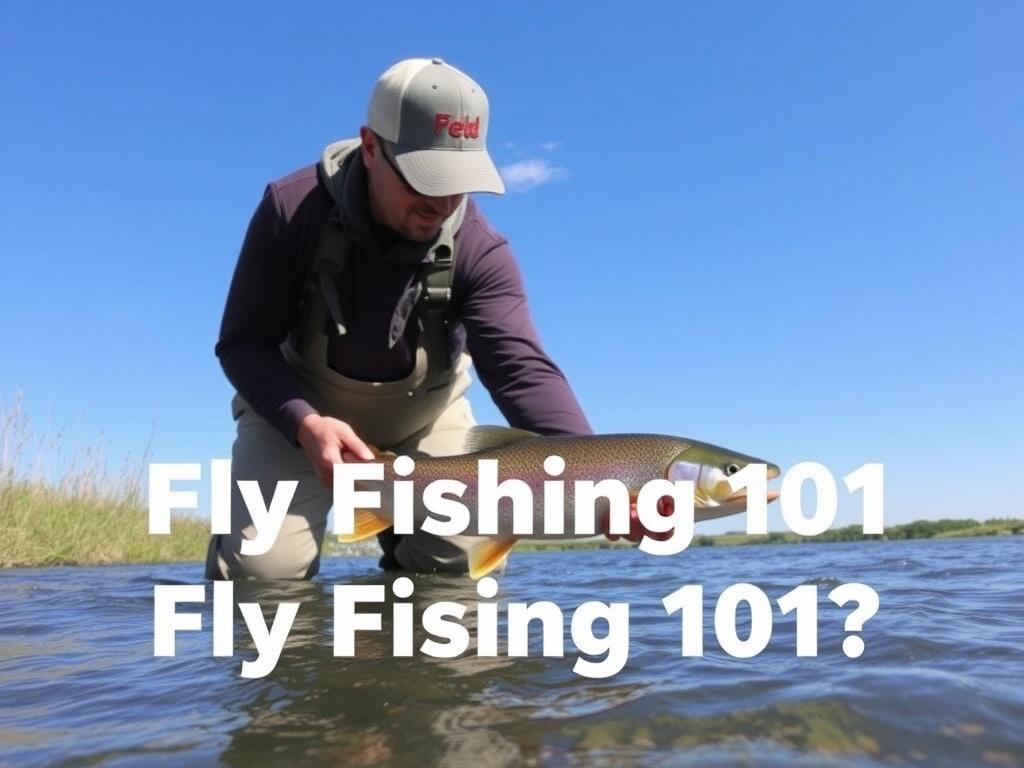
Fly fishing is a unique method that uses an artificial «fly» to catch fish, typically trout, bass, or salmon. Unlike traditional fishing, where you rely on bait and heavy weighted lures, fly fishing uses lightweight flies made of feathers, fur, and other materials designed to mimic the insects that fish naturally eat.
The fly itself is basically weightless, so you can’t just throw it like a regular lure. Instead, you use a fly rod and specialized fly line to cast the fly delicately onto the water. This style of fishing is as much about technique and finesse as it is about luck, and many anglers find it deeply rewarding to master the skill of presenting a fly in a way that convinces a wary fish to bite.
Essential Fly Fishing Gear for Beginners
Before you head out to your favorite river or lake, having the right gear can make all the difference. Here’s a breakdown of the must-have items for those new to fly fishing:
| Gear Item | Description | Tips for Beginners |
|---|---|---|
| Fly Rod | A flexible rod specifically designed for casting lightweight flies. Usually 7–9 feet long. | Start with a 9-foot, 5-weight rod – it’s versatile for most freshwater fishing. |
| Fly Reel | Holds the fly line and provides drag when fighting fish. | Choose a reel that balances well with your rod and has a smooth drag system. |
| Fly Line | Special weighted line that helps cast the fly. | Use a weight-forward floating line for easy casting and to keep the fly on the surface. |
| Leader and Tippet | Clear, thin monofilament or fluorocarbon line connecting the fly line to the fly. | Start with a 9-foot tapered leader and fine tippet for delicate presentations. |
| Flies | Artificial lures designed to imitate various insects and baitfish. | Carry a basic selection: dry flies, nymphs, and streamers. |
| Waders and Boots | Waterproof gear that lets you stand in streams comfortably. | Match boots with your fishing environment; gravel wading boots are popular. |
| Other Accessories | Items like a hat, polarized sunglasses, fly box, forceps, and fishing vest. | Polarized sunglasses reduce glare and help you see fish underwater. |
Having the right gear tailored to your environment and skill level will boost your confidence and make learning fly fishing easier.
Understanding Different Types of Flies
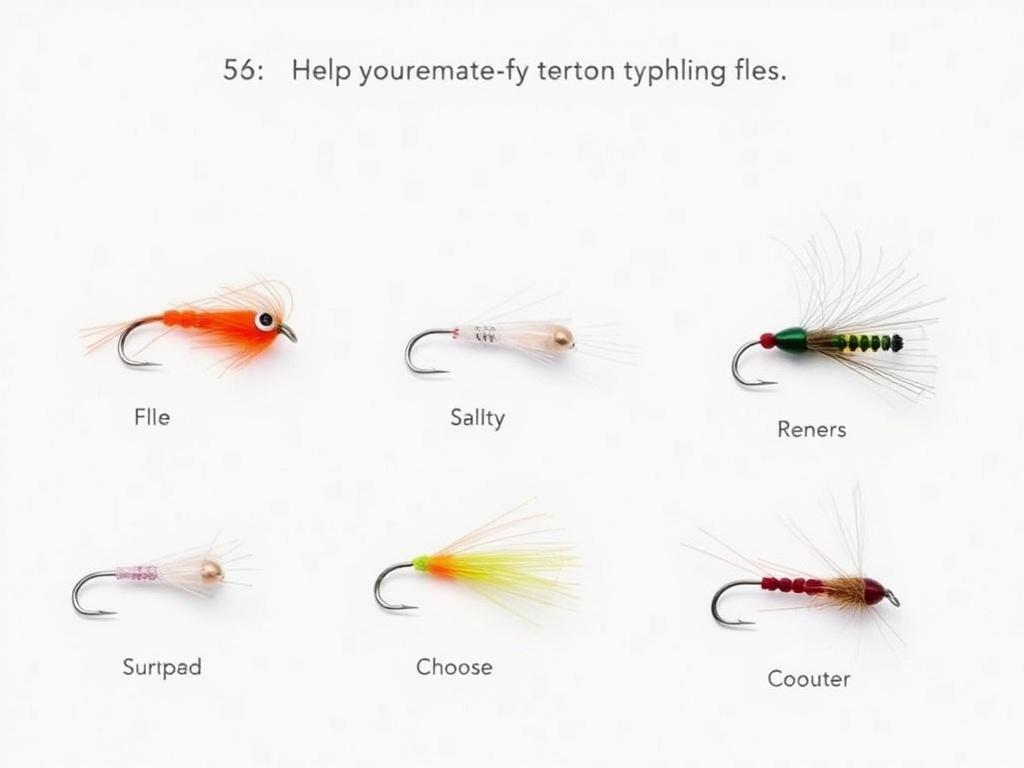
A huge part of fly fishing is knowing your flies and how to use them. Fish naturally feed on different insects at various stages of their life cycles, and matching your fly to what’s «hatching» — the insects currently active — can increase your chances of success.
Three Main Categories of Flies:
- Dry Flies: These float on the water’s surface, imitating adult insects like mayflies or caddisflies. Ideal for fishing on calm water when you can spot rising fish.
- Nymphs: These represent the underwater immature form of insects. Because fish often feed below the surface, nymph fishing can be highly effective.
- Streamers: Larger flies that imitate small fish, leeches, or aquatic creatures. Best for more aggressive fish or murky water.
For new anglers, it’s helpful to carry a few basic patterns for each type. These include classic dry flies like the Adams, midges and pheasant tail nymphs, and basic streamers such as Woolly Buggers.
Mastering the Basics: Fly Casting Techniques
One of the biggest challenges for beginners is learning how to cast the fly accurately and gracefully. Unlike spin fishing where the weight of the lure pulls the line, fly rods use the weight of the fly line itself to propel the fly forward.
Key Fly Casting Tips for New Anglers:
- Start with the basics: Practice the overhead cast on dry land, focusing on smooth, controlled movements rather than power.
- Understand line control: The fly line must be straight and tight during the cast; slack line reduces accuracy and distance.
- Timing is critical: Pause momentarily at the end of your backcast to load the rod before flicking it forward.
- Keep your wrist firm: Most of the casting power comes from your forearm rather than wrist flicks.
- Practice length control: You do not need to always cast long distances; controlled short casts can be just as effective.
Many beginners find lessons, videos, or joining a local fly fishing club helpful for improving their casting quickly. Patience and practice go a long way.
Reading the Water: Where to Find Fish
Fly fishing is as much about observation as it is about casting. Learning to read the water and spot where fish might be hiding will greatly improve your chances of catching something.
Common Water Features to Watch For:
| Water Feature | Description | Why Fish Prefer It |
|---|---|---|
| Riffles | Shallow, fast-moving sections of a stream with bubbling water. | High oxygen levels and abundant insects make riffles great feeding spots. |
| Pools | Deeper, calmer stretches where water slows down. | Fish rest here to conserve energy and wait for food. |
| Undercut Banks | Areas where the water erodes beneath the bank, creating underwater caves. | Provides shelter and ambush points for fish. |
| Structure and Cover | Rocks, submerged logs, and vegetation. | Offer hiding spots and attract insects, creating feeding zones. |
Spending time observing water conditions, insect activity, and any signs of fish – like jumps or ripples – will help you choose the right spot for your fly fishing trip.
Essential Fly Fishing Etiquette and Conservation
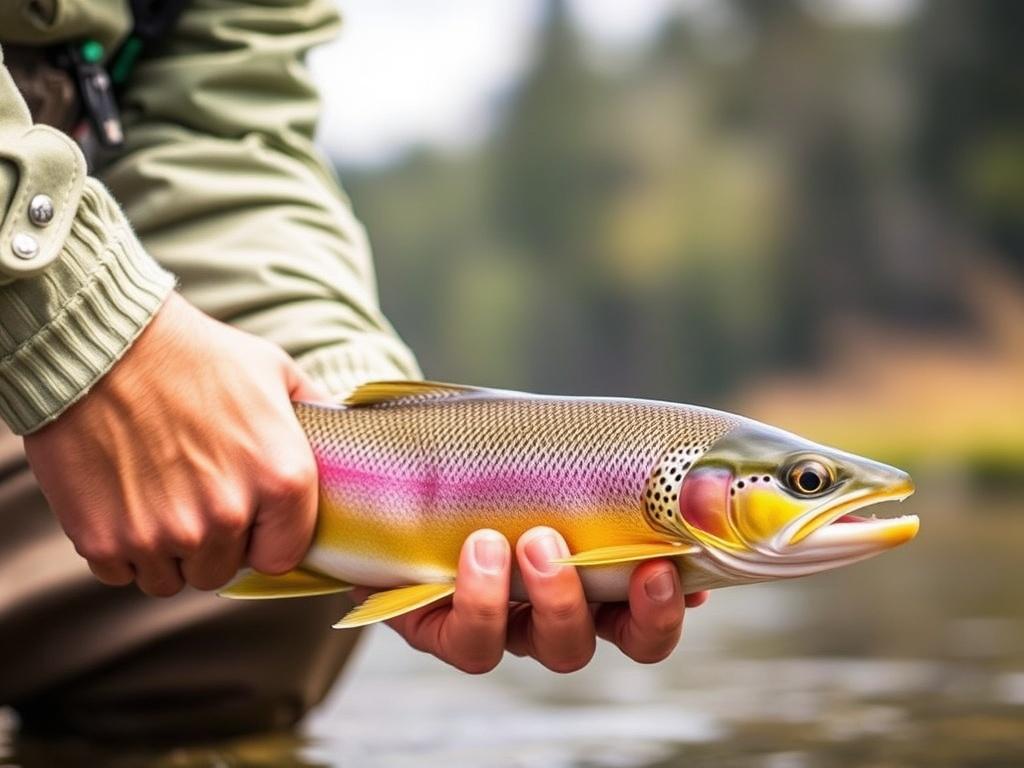
Fly fishing is a sport deeply intertwined with nature, and respecting the environment and other anglers is key to preserving the experience. Here are some simple rules to follow:
- Practice catch and release: Handle fish gently with wet hands or a net, minimize time out of water, and release them promptly.
- Respect private property: Always get permission before fishing on private land.
- Leave no trace: Pack out all trash, cut old tippets, and avoid disturbing the habitat.
- Give space: When you see other anglers fishing, keep your distance and avoid crowding.
- Use barbless hooks: They make releasing fish safer and easier for beginners too.
Following these practices not only protects the environment but also ensures other anglers enjoy the sport as much as you do.
Common Challenges New Fly Anglers Face and How to Overcome Them
Getting into fly fishing can be incredibly rewarding, but it’s also normal to face some frustrations. If you find yourself struggling, here are some typical issues and practical advice:
1. Difficulty with Casting Accuracy
Fly casting takes time to develop. To improve, practice frequently and break down your casts into smaller segments. Use targets on dry land—like a hat or a log—to aim at, building muscle memory.
2. Not Detecting Bites Quickly
Bites on artificial flies can be subtle. Keep your line tight and watch it carefully. Feel for any movement in your rod tip and be ready to set the hook gently but decisively.
3. Choosing the Wrong Fly
If fish aren’t biting, try switching between dry flies, nymphs, and streamers to see what works best. Observe insect activity or ask local anglers what’s hatching.
4. Fishing Too Quickly
Patience is key in fly fishing. Give your fly time to drift naturally and avoid overworking the water. Slow down, observe, and trust the process.
Additional Resources for Learning Fly Fishing
Starting fly fishing is an adventure, and tapping into resources can accelerate your learning curve:
- Local Fly Shops: Expert advice, gear recommendations, and nearby fishing reports.
- Online Tutorials and Videos: Websites and platforms like YouTube offer step-by-step casting lessons.
- Books: Classics like «The Orvis Fly-Fishing Guide» or «Fly Fishing for Dummies» provide comprehensive insights.
- Fly Fishing Clubs and Classes: Hands-on experience and community support.
- Fishing Apps: Tools that identify local fishing spots, insect hatches, and weather.
Engaging with the community and continuously learning will enhance both your skills and enjoyment.
Fly Fishing Safety Tips
Being prepared ensures that your outdoor experience stays fun and safe. Here are some safety essentials:
- Check Weather: Avoid fishing during storms or extreme conditions.
- Wear a Life Vest: Especially when fishing in deep or fast-moving water.
- Use Polarized Glasses: Protect your eyes from hooks and see underwater obstacles.
- Be Mindful of Wildlife: Respect animals and maintain a safe distance.
- Stay Hydrated and Protect Yourself From Sun: Use sunscreen, hats, and carry water.
Preparation and awareness will keep your fly fishing trips enjoyable and hazard-free.
Conclusion
Fly fishing is a wonderfully rewarding sport that connects you with nature, hones your patience, and sharpens your skills. For new anglers, the adventure begins with understanding gear, mastering basic casting, learning to read the water, and choosing the right flies. Challenges are inevitable, but with practice and a willingness to learn, your confidence will grow. Whether you’re casting dry flies over a peaceful stream or trying your luck with colorful streamers in a lively river, every moment offers a chance to appreciate the beauty of the sport. Remember to respect the environment and fellow anglers, invest in good gear, and don’t hesitate to seek help when needed. Above all, enjoy your time outdoors, savor the moments of quiet, and celebrate the thrill of the catch. Fly fishing can become not just a hobby but a lifelong passion.
Как вам статья?
